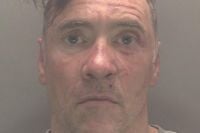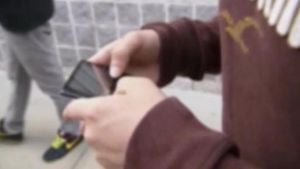On May 26, 2025, Liverpool’s city center was awash with red, white, and the jubilant sounds of football fans celebrating Liverpool FC’s Premier League title win. The mood was electric as thousands gathered, families and friends alike, their faces painted with the joy of victory. But as the parade wound down and crowds began to disperse near Water Street, that celebration was shattered in an instant by an act that would leave the city reeling.
Paul Doyle, a 54-year-old father of three from Croxteth, drove his two-tonne Ford Galaxy into the dense crowd, injuring more than 130 people—among them babies, children, and the elderly. According to BBC, the victims ranged in age from six-month-old Teddy Eveson to 77-year-old Susan Passey. The attack, described by prosecutors as an "act of calculated violence," transformed a day of unity into chaos and fear.
Doyle’s actions were not a split-second decision, authorities say. Chief Crown Prosecutor Sarah Hammond, speaking to the press after Doyle’s court appearance, explained: "Dashcam footage from Doyle’s vehicle shows that as he approached Dale Street and Water Street, he became increasingly agitated by the crowds. Rather than wait for them to pass, he deliberately drove at them, forcing his way through. Driving a vehicle into a crowd is an act of calculated violence. This was not a momentary lapse by Paul Doyle—it was a choice he made that day and it turned celebration into mayhem." Her words were echoed by Merseyside Police, who noted that Doyle had followed an ambulance through a temporary roadblock and that it was "by sheer luck that nobody was killed."
The incident itself was horrifying. Social media footage captured people bouncing off Doyle’s car bonnet as it swerved through the crowd, with the vehicle at one point slowing before accelerating again, striking dozens and leaving at least four trapped beneath its wheels. Detective Chief Inspector John Fitzgerald told BBC that the episode "turned a day of celebration into a distressing and frightening experience."
The charges Doyle faced matched the severity of the attack. On November 27, 2025, at Liverpool Crown Court, Doyle changed his plea to guilty on all 31 charges, including dangerous driving, affray, 17 counts of attempting to cause grievous bodily harm (GBH) with intent, nine counts of causing GBH with intent, and three counts of wounding with intent. These charges related to 29 specific victims, though the total number of people injured reached 134. The court heard that Doyle sobbed in the dock as he admitted his guilt, removing his glasses, bowing his head, and clasping his hands together—his remorse palpable, yet unable to undo the devastation wrought.
For many, the most confounding aspect of the case was Doyle himself. Neighbors and colleagues painted a portrait at odds with the violent act. In the quiet cul-de-sac of Burghill Road, where Doyle lived with his wife Alison, a local teacher, and their three sons, residents described him as a "nice guy" and a "very good neighbor." One woman told BBC, "He genuinely seemed like a nice man. I was going out with my son and he said 'hello how are you?' and so on. He always let on." That very morning, Doyle had been in his garden, chatting amiably with neighbors and tending to the trees—nothing, they said, seemed amiss.
Colleagues, too, struggled to reconcile the man they knew with the events of May 26. One former coworker, who met Doyle at an IT firm in Merseyside, described him as a mentor with a great sense of humor, noting their shared military background as former Royal Marines. Another recounted a group trek up Mount Kilimanjaro in Tanzania, where Doyle’s competitive streak shone: "When we were up there, coming down, I think a couple of French guys started running down and he didn’t want them to beat him so he ran down after them. He barely broke a sweat." Both colleagues insisted they had never seen Doyle drink heavily or use drugs, nor had they witnessed any explosive temper.
Yet, dashcam footage told a different story. Prosecutors said it showed Doyle swearing angrily, undertaking, and jumping red lights as he drove into the city center to pick up a friend who had watched the parade. During the 25-minute journey, his agitation grew, and by the time he reached Water Street, he was swearing at fans before mowing many down "like skittles." Footage posted online captured the sheer terror as people scrambled to escape the vehicle’s path.
In police interviews, Doyle claimed he panicked after seeing a man with a knife try to open his car door, saying he was driving slowly through the crowds when someone smashed his car window and he feared he was about to be stabbed. But, as BBC and iNews reported, his own dashcam footage contradicted this account, revealing a pattern of reckless and deliberate behavior rather than a singular moment of fear.
The emotional toll extended beyond the victims and their families. Neighbors recounted the shock and heartbreak that rippled through Doyle’s household. One said, "His wife had come out the next morning and one of our other neighbors asked her 'was that your car?' She burst into tears and said 'yes,' and you didn’t really see her after that. I feel sorry for them, it’s not their fault and it’s ruined their lives."
Judge Andrew Menary KC, the Recorder of Liverpool, made it clear that Doyle should expect a "custodial sentence of some length" when sentencing begins on December 15 and 16, 2025. The court will consider the impact on all 29 victims named in the charges, as well as the broader trauma inflicted on the city.
Chief Crown Prosecutor Hammond summed up the broader meaning of the case: "This attack did not just harm individuals—it struck at the heart of a city united in joy, leaving fear in its wake. By entering guilty pleas, Doyle has finally accepted that he intentionally drove into crowds of innocent people during Liverpool FC’s victory parade."
The Liverpool parade attack stands as a haunting reminder of how quickly joy can turn to tragedy and how, sometimes, those we think we know best can surprise us in the worst possible ways. As the city awaits Doyle’s sentencing, the wounds from that day—both physical and emotional—are still raw, and the search for answers continues.






